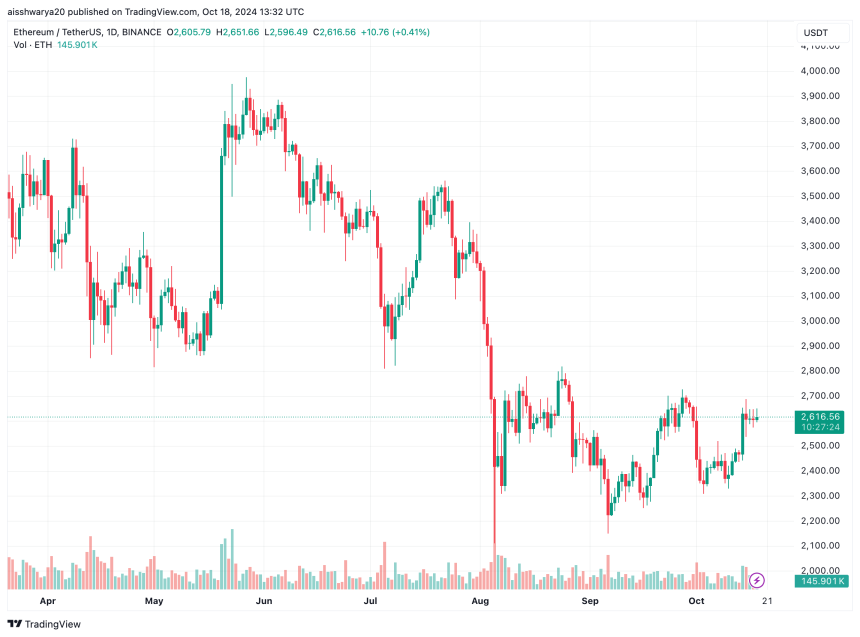This article is also available in Spanish.
Nearly 70% of institutional investors in Ethereum (ETH) participate in ETH staking, and 60.6% of them exploit third-party staking platforms.
The Ethereum Staking Landscape at a Glance
According to A report According to Blockworks Research, 69.2% of institutional investors holding Ethereum are engaged in staking the platform’s native ETH token. Of these, 78.8% are investment companies and asset managers.
Notably, just over one in five institutional investor respondents – or 22.6% – of respondents said ETH or ETH-based liquid staking token (LST) made up more than 60% of their total portfolio allocation.
The report notes a seismic transformation in the Ethereum staking landscape since the network moved from a proof-of-work (PoW) to proof-of-stake (PoS) consensus mechanism during the Merge upgrade.
Currently, there are nearly 1.1 million on-chain validators operating on the network, investing 34.8 million ETH. Once merged, Ethereum network participants could only withdraw their ETH after the Shapell update in April 2023.
After the initial phase of ETH withdrawals, the network has seen a steady inflow, which indicates powerful demand for ETH staking. Currently, 28.9% of the total ETH supply is staked, making it the network with the highest value of staked assets in dollars, valued at over $115 billion.
It is worth noting that the annual profit from staking ETH is approximately 3%. The more ETH that is staked, the profitability decreases proportionally. However, network validators can also earn additional ETH through priority transaction fees during periods of high network activity.
Third party staking dwarfs solo staking
Anyone can participate in ETH staking, either as a solo person or by delegating their ETH to a third-party staking platform. While solo staking gives the bettor full control over their ETH, it comes with a high barrier to entry of staking at least 32 ETH – worth over $83,000 at the current market price of $2,616.
Conversely, holders can stake as little as 0.1 ETH via third-party stakers, but must give up some degree of control over their assets. More recently, Ethereum co-founder Vitalik Buterin accented the need to lower entry requirements for individual ETH players to ensure greater decentralization of the network.
Currently, approximately 18.7% of players play solo. However, the trend shows that solo staking is withering in popularity due to the high entry barrier and inefficiency of locked capital. The report explains:
Once staking is blocked, ETH can no longer be used for other financial activities across the DeFi ecosystem. This means you can no longer provide liquidity to various DeFi primitives or collateralize your ETH to borrow against it. This represents an opportunity cost for solo players, who must also factor in animated network reward rates for staked ETH to ensure they are maximizing their risk-adjusted profit potential.
As a result, third-party staking solutions are becoming increasingly popular among ETH players. However, such platforms – dominated by centralized exchanges and polished staking protocols – raise concerns about network centralization.
Nearly 48.6% of ETH players using third-party staking platforms exploit only one integrated platform such as Coinbase, Binance, Kiln and others.
The report highlights key factors driving institutional investors to exploit third-party platforms, including platform reputation, supported networks, pricing, ease of implementation, competitive costs and platform expertise.
While the Ethereum staking ecosystem is evolving, this growth has not yet been reflected in the price of ETH. ETH has significantly weaker against BTC for an extended period, only recently acquiring traction after the decision of the American Federal Reserve (Fed) to reduce interest rates.
Nevertheless, some cryptocurrency research firms remain hopeful about the potential return of ETH to BTC later this year. At press time, ETH is trading at $2,616, up 0.8% over the past 24 hours.

Featured image from Unsplash, charts from Blockworks Research and Tradingview.com
